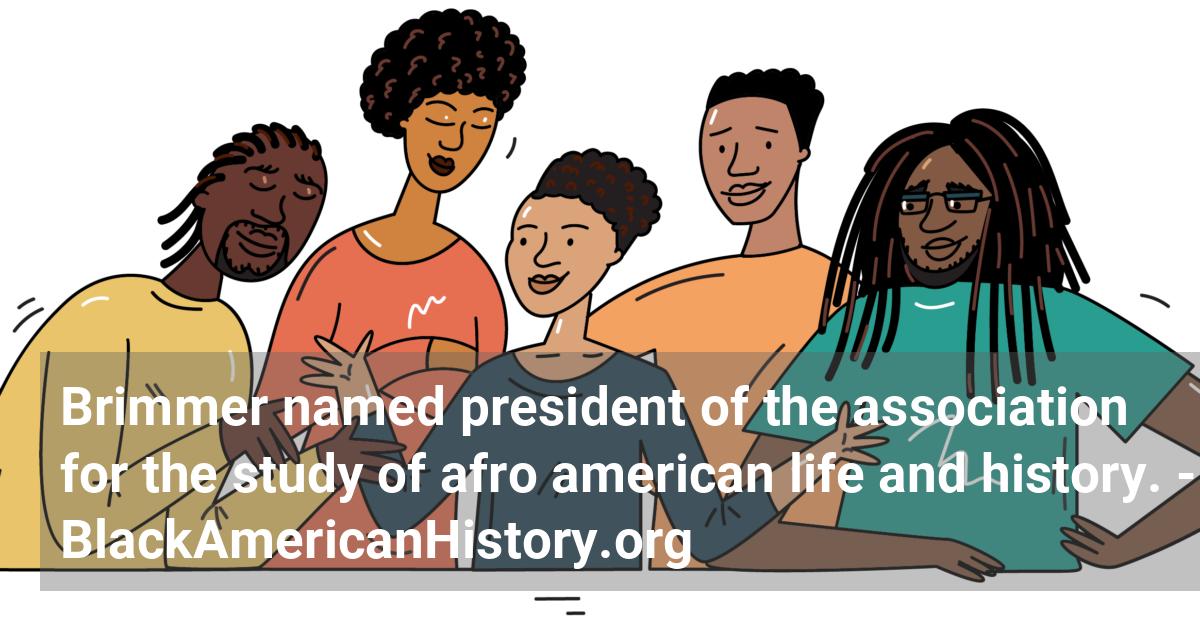Home / Full timeline / Andrew F. Brimmer, former Black American governor of the Federal Reserve Board, is installed as president of the Association for the Study of Afro-American Life and History (ASALH).
 Andrew F. Brimmer, former Black American governor of the Federal Reserve Board, is installed as president of the Association for the Study of Afro-American Life and History (ASALH).
Andrew F. Brimmer, former Black American governor of the Federal Reserve Board, is installed as president of the Association for the Study of Afro-American Life and History (ASALH).
1989 (Jan)
Andrew F. Brimmer, former Black American governor of the Federal Reserve Board, was installed as president of the Association for the Study of Afro-American Life and History (ASALH). Brimmer, who had also served as president of the nation's oldest Black history organization in 1969, returned to the leadership of the group at a time when it was just beginning to recover from severe financial difficulties. Administrative problems and a declining membership had seriously curtailed the association's ability to provide programs and deliver services in the 1980s. These financial straits had led to suspension of its two principal publications, the Journal of Negro History and the Negro History Bulletin. Just prior to Brimmer's installation, the Journal of Negro History, the oldest and most prestigious of Black scholarly journals, was revived through the assistance of Morehouse College, the base of its editorial operations. Leroy Keith, Jr., the newly inaugurated president of the college, had made the pledge to resurrect the periodical soon after taking office. Upon assuming the leadership of ASALH anew, Brimmer pledged to make a similar effort on behalf of the entire association and those it served.
References:
- • Hornsby, Alton. Chronology of African-American History: Significant Events and People from 1619 to the Present. Detroit: Gale Research, 1995.
